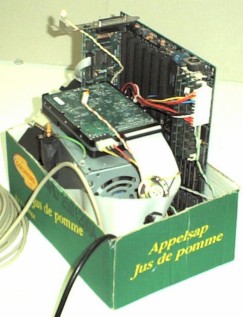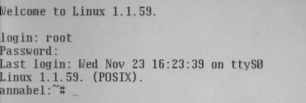Case Demoding
 Case Moding is the process of changing the appearance of your computer
case by means of transparent panels, neon-lights, and coloured
flat-cables. It started with a few people doing this, but nowadays,
ready made packages are sold over the counter of computer shops, so
that everybody who can install a new card in their PC can do it now.
Here, I am giving an example of some alternative way of Case Moding,
which I will call Case Demoding, because I am not adding parts but
removing parts.
Case Moding is the process of changing the appearance of your computer
case by means of transparent panels, neon-lights, and coloured
flat-cables. It started with a few people doing this, but nowadays,
ready made packages are sold over the counter of computer shops, so
that everybody who can install a new card in their PC can do it now.
Here, I am giving an example of some alternative way of Case Moding,
which I will call Case Demoding, because I am not adding parts but
removing parts.
Minimal hardware configuration
This Case Demoding is performed on
the first PC I bought, named
annabel. It is a DX-66. First I reduced the number of
parts needed for it to operate, resulting in the following list:
- 200 Watt power supply
-
GMB-486SG 80486 Vesa green mother board
- 486 DX2 66 Mhrz processor with 128 Kbyte level 2 cache.
- 16 Mbytes of memory.
- PTI-255W VL-Bus Super I/O card.
- WDC AC2420F 405 Mbyte hard disk with 64 Kbyte cache.
- 3 LED's, micro-switch and loudspeaker.
Because this computer runs Linux, it is accessible through a
terminal on a COM-port. For this reason the computer can work,
although it does not have:
- A monitor.
- A graphical card.
- A keyboard.
- A mouse.
- A floppy drive.
- A case.
One could still replace the hard disk with a floppy drive
and boot it from the floppy using a minimal Linux version,
such as LOAF.
Software configuration
The Linux configuration files needed to be changed, such that
the COM-port on the Super I/O card could work as a terminal,
in stead of being used by the mouse driver. I also had to set
the BIOS such that it would not halt on a missing keyboard.
Note that the BIOS settings can only be changed if the computer
has a monitor, graphical card and a keyboard. I first tried out
the whole configuration before I could think of a way to put
a box around it.
Puting a case around it
I came up with the idea of putting the mother
board and graphical card on the side against the power supply,
and putting the hard disk on top of the power supply. Down
stairs I found a box that came with eight 1.5 liter apple
juice cartons. It proofed to be perfect for the purpose I
had in mind. As a finishing touch, I arranged the LEDS in an
intersting way. The orange drive active LED I put on top of the
hard disk, and the green and yellow LED's put on the top. I
also disconnected the COM port connector such that the attached
NUL-modem cable did not have to stick up in the air.
Final test
So there
it was, a carton box with a pile of components and two cables
coming out of it. And did it still work? For that purpose, I
attached my Toshiba T1900S
on the other end of the NUL-modem cable and started a VT100
terminal emulation program, resulting in the following configuration:

It booted without problems and I could log in, as can be seen
on the following snapshot of the screen:

My life as a hacker |
My computers

 Case Moding is the process of changing the appearance of your computer
case by means of transparent panels, neon-lights, and coloured
flat-cables. It started with a few people doing this, but nowadays,
ready made packages are sold over the counter of computer shops, so
that everybody who can install a new card in their PC can do it now.
Here, I am giving an example of some alternative way of Case Moding,
which I will call Case Demoding, because I am not adding parts but
removing parts.
Case Moding is the process of changing the appearance of your computer
case by means of transparent panels, neon-lights, and coloured
flat-cables. It started with a few people doing this, but nowadays,
ready made packages are sold over the counter of computer shops, so
that everybody who can install a new card in their PC can do it now.
Here, I am giving an example of some alternative way of Case Moding,
which I will call Case Demoding, because I am not adding parts but
removing parts.
